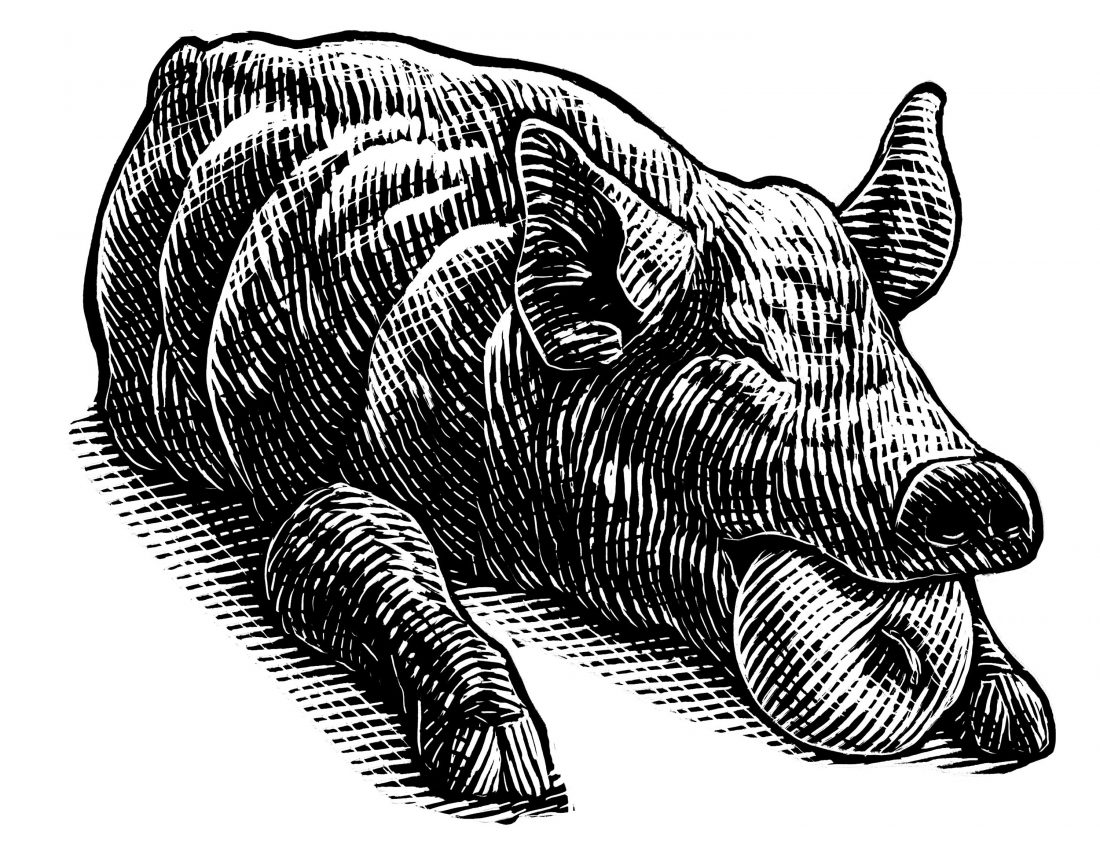An excerpt from The Southerner’s Handbook by Garden & Gun.
Even though the slow-food movement can often sound pretentious and artisanal and boutiquey and oh so rococo, it still pisses me off when I’m going off about the pleasures of slow-cooked hog only to have some twee poindexter roll his eyes and huff some hot air out his blowhole by way of suggesting that he dwells in a Randian free market where his rugged individualism is mighty happy with some franchise-bought pork sandwich and, besides, haven’t you lived too long up there in New York with the Yankees and bought into their politically correct propaganda about precious locavorism when the stuff served beneath the well-lit menus at any of the chains found on the way out of town is just as good? And here’s the double paradox: If I were to plunge my nine-inch brushed steel locking tongs straight through this guy’s bow tie and into his pencil neck, the law, as it’s currently construed, gets me in trouble.
There are just so many things wrong with confusing the pretentious inklings of born-again foodies with the deep pleasure of slow-cooking a whole hog. I try to convert those who casually utter the words “hate to cook” with filibusters about just how easy, even small-d democratic, it is to cook a whole hog. Sure, it’s laborious in the most cathartic sense of that word, but it’s not hard. Essentially, the heat source is smoke, not hot air, and the meat renders differently. Instead of sizzling the fat—as you do with bacon in a pan—you are melting all that interstitial goodness and carrying it through the meat with, depending on your druthers, tasty pecan smoke. There’s nothing pretentious in any of that, just lots of awesomeness.
To pull the whole thing off, you want to put a whole pig on, in my case, some subway grate I bought from a nearby foundry, or any large piece of ungalvanized grill—ungalvanized because you don’t want your pig to taste like a fired cap gun licked by a six-year-old boy when nobody’s looking, not that there’s anything wrong with that. With the hog on the grill, you want to cover it in some dome-like way (I use cinder blocks and industrial-width aluminum foil) that creates enough space around the pig to allow for smoke circulation and then, spend eighteen to twenty-four hours shoveling wood cinders—smoldering, but never flaming—underneath the pig to maintain a temperature of roughly 200 to 210 degrees Fahrenheit, relying on lots of thermometers from the hardware store (digital, infrared, old-style ice-pick ones) because excessive gear is the American way when it comes to all large-scale backyard enterprises.
A good eighteen-hour pig requires rotating pit crews. For the graveyard shift, I typically rely on bribing a handful of nephews and nieces with a cooler of beer and a guitar. The result the next afternoon is a grand thing that unveils to a yard full of oohs and aahs because that final hog can, like victory, claim many fathers. The fellowship can’t be beat. Don’t take my word for it. Here’s one of the most revealing entries of any colonial diary: “Went in to Alexandria to a Barbecue and stayed all Night.” That’s George Washington writing—our Founding Epicurean, a man who knew how to have a good time and, when he finally got some sleep, founded a nation.
The Southerner’s Handbook is available at Fieldshop by Garden & Gun








